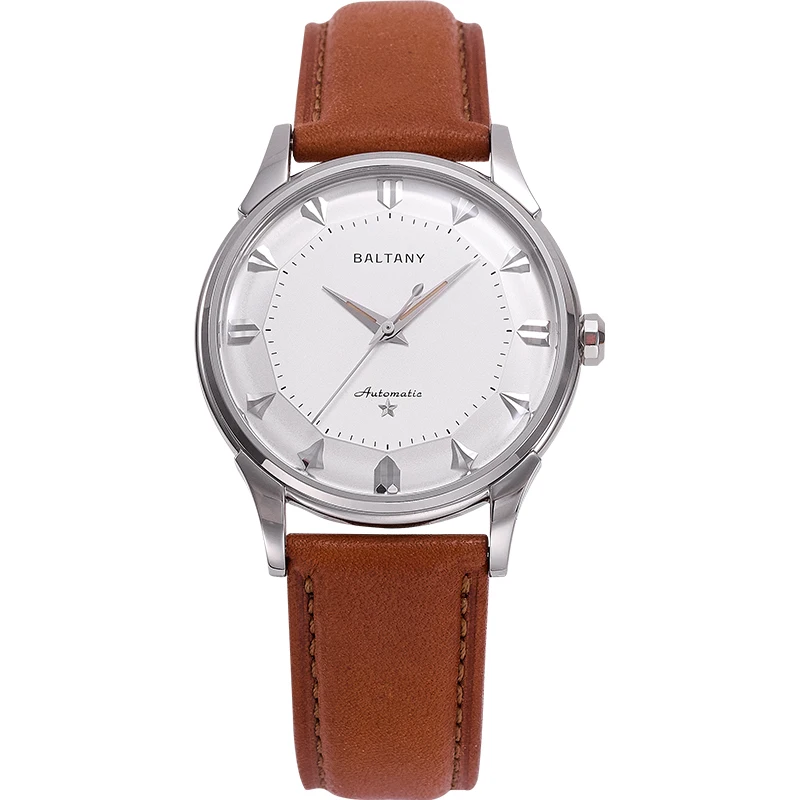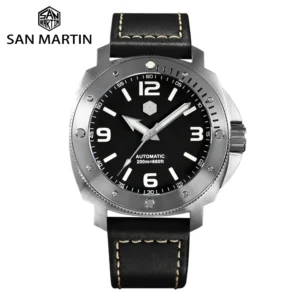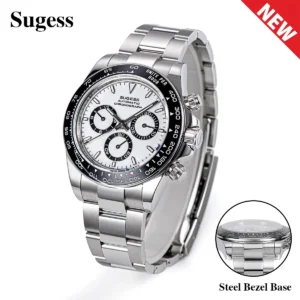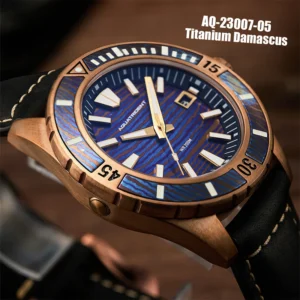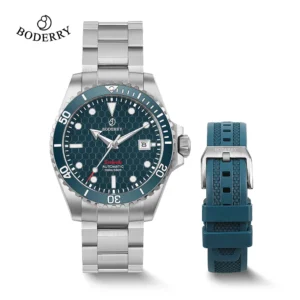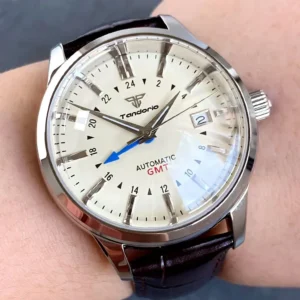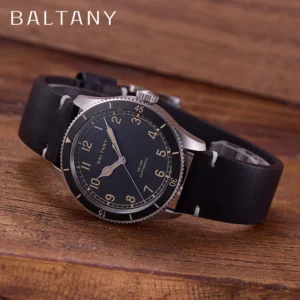Understanding Watch Case Materials: The Basics of Titanium and Stainless Steel
When investing in a premium timepiece, the case material plays a crucial role in determining how well your watch withstands daily wear and maintains its appearance over years of use. Titanium and stainless steel stand as the two premier materials in modern luxury watchmaking, each offering distinct advantages for discerning watch enthusiasts.
These materials aren’t merely chosen for aesthetics—they represent different approaches to protecting the delicate mechanical movements housed within. The right case material provides a perfect balance of strength, weight, and resilience against environmental factors that could otherwise compromise your timepiece’s integrity.
Many prestigious watchmakers offer models in both materials, recognizing that different wearers have unique needs. The evolution of these materials in history of dive watch engineering shows how manufacturers have continuously refined their approaches to durability.
Whether you prioritize lightweight comfort, scratch resistance, or corrosion protection, understanding the fundamental differences between titanium and stainless steel will help you make an informed decision that aligns with your lifestyle and expectations for long-term performance.
Material Composition: What Makes These Metals Different
At the molecular level, titanium and stainless steel have distinct compositions that directly influence their performance as watch case materials.
Titanium watch cases typically utilize either Grade 2 (commercially pure titanium) or Grade 5 (Ti-6Al-4V), an alloy containing 6% aluminum and 4% vanadium. This composition gives titanium its remarkable strength-to-weight ratio while maintaining excellent corrosion resistance. The molecular structure features a hexagonal close-packed arrangement that contributes to its lightweight properties.
Stainless steel watch cases predominantly use 316L grade, containing approximately 16-18% chromium, 10-14% nickel, and 2-3% molybdenum. Premium manufacturers sometimes opt for 904L steel, which offers enhanced corrosion resistance due to higher chromium, nickel, and molybdenum content. The face-centered cubic structure of these austenitic stainless steels provides excellent ductility and toughness.
Both materials form passive oxide layers when exposed to oxygen, creating an invisible protective barrier. Titanium’s oxide layer forms instantly and is exceptionally stable, which explains its superior biocompatibility and corrosion resistance. Stainless steel’s chromium-rich oxide layer provides good protection but can be more vulnerable in certain environments.
The unique titanium watch properties and benefits stem directly from this atomic composition, offering advantages that go beyond mere weight reduction.
Scratch Resistance Comparison: Keeping Your Watch Looking New
When it comes to maintaining a pristine appearance, scratch resistance becomes a primary concern for watch owners. Titanium and stainless steel perform quite differently in this regard.
Stainless steel typically rates higher on hardness scales, with 316L stainless measuring around 200 on the Vickers hardness scale, compared to Grade 5 titanium’s typical rating of 150-170. This translates to better resistance against surface scratches from everyday objects like keys, desk edges, and doorframes.
However, titanium has a unique characteristic that partially compensates for this disadvantage. Its natural oxide layer creates a grayish appearance that helps disguise minor scratches, making them less visually apparent than on the reflective surface of polished stainless steel. This is one reason why titanium is used in watches where maintaining appearance under rough conditions matters.
Modern watchmakers have developed various treatments to enhance scratch resistance for both materials:
| Treatment | Material | Hardness Increase | Visual Effect |
|---|---|---|---|
| DLC Coating | Both | 1000-3000 HV | Black surface |
| Diashield (Seiko) | Titanium | ~300% | Minimal change |
| Tegimented (Sinn) | Steel | ~750-1200 HV | Minimal change |
| Ceratanium (IWC) | Titanium | Significant | Black ceramic-like |
While stainless steel can be easily re-polished to remove scratches, titanium requires specialized equipment and techniques, making scratch repair more challenging for titanium watch owners. This is an important consideration for those who prioritize maintaining a flawless appearance over the years.
Impact and Dent Resistance: Protection From Daily Accidents
Beyond surface scratches, watches must withstand impacts from occasional bumps and accidental drops. Here, the structural properties of each material reveal significant differences in performance.
Titanium offers impressive tensile strength—Grade 5 titanium reaches approximately 900-1000 MPa, while 316L stainless steel typically measures around 500-650 MPa. This means titanium can withstand greater pulling forces without deforming. However, when considering impact resistance, other factors come into play.
Key differences in impact performance include:
- Stainless steel’s greater density (8.0 g/cm³ vs. titanium’s 4.5 g/cm³) provides more mass to absorb impact energy
- Titanium’s higher yield strength helps resist permanent deformation
- Stainless steel tends to dent rather than crack, making damage less catastrophic
- Titanium’s elasticity allows it to “bounce back” from minor impacts better than steel
For everyday accidents like door frame bumps or desk knocks, both materials provide excellent protection for the delicate movement inside. However, stainless steel generally performs better against severe impacts that might occur during activities like rock climbing or mountain biking.
The ultimate guide to tough watch cases examines how these materials perform in extreme conditions, showing that context matters significantly when evaluating which material provides better protection in specific scenarios.
Corrosion Resistance: Withstanding Sweat, Water, and Environmental Factors
For watches exposed to moisture, chemicals, and various environments, corrosion resistance becomes a critical durability factor. This is where titanium demonstrates clear superiority.
Titanium’s natural oxide layer provides nearly impenetrable protection against corrosion from:
– Salt water and chlorinated pools
– Human sweat (even with high acidity)
– Industrial chemicals and pollutants
– Extreme humidity environments
Stainless steel offers good corrosion resistance, particularly 316L “marine grade” steel with its molybdenum content. However, it remains susceptible to specific corrosion types:
– Pitting corrosion from prolonged saltwater exposure
– Crevice corrosion where water can become trapped
– Stress corrosion cracking in certain environments
– Surface rust from scratches that penetrate the protective layer
For divers and frequent swimmers, titanium’s corrosion resistance makes it particularly valuable. Our collection of professional-spec dive watches includes models specifically engineered for marine environments where corrosion resistance is paramount.
Even for everyday wear, titanium’s superior resistance to perspiration makes it ideal for those with acidic sweat or who live in humid coastal regions. While modern stainless steel watches perform admirably in most conditions, titanium simply requires less maintenance to prevent corrosion over years of ownership.
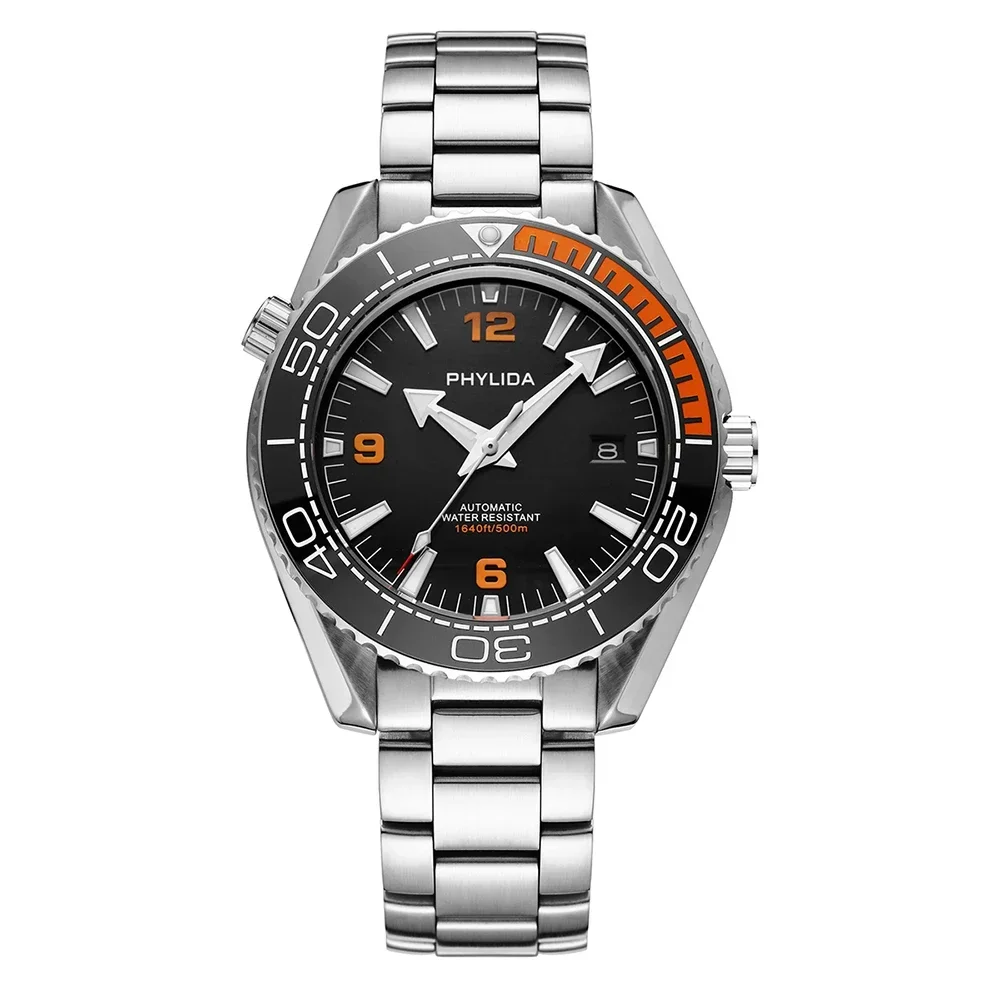
Weight Difference: Comfort for All-Day Wear
Perhaps the most immediately noticeable difference between these materials is weight. Titanium is approximately 45% lighter than stainless steel for the same volume, creating a substantial difference in wearability for watches of identical dimensions.
For perspective, consider a typical 42mm dive watch:
– In stainless steel: approximately 150-180 grams with bracelet
– In titanium: approximately 85-100 grams with bracelet
This weight reduction transforms the wearing experience, especially for larger watches or all-day wear. Many first-time titanium watch owners describe the sensation as “forgetting you’re wearing a watch,” particularly beneficial for those with active lifestyles or who wear watches for extended periods.
However, this lightweight quality creates an interesting psychological effect. Some watch enthusiasts associate substantial weight with quality and value, leading them to prefer the heft of stainless steel. This perception is purely subjective, as titanium’s lower weight results from advanced material properties rather than any compromise in quality.
For those interested in experiencing this difference firsthand, our titanium automatic watches collection offers excellent examples of how reduced weight enhances comfort without sacrificing durability or precision.
Hypoallergenic Properties: Skin-Friendly Options for Sensitive Wearers
An often overlooked aspect of watch case durability is compatibility with the wearer’s skin. For those with metal sensitivities, this becomes a critical consideration that can determine long-term wearability.
Titanium stands out as exceptionally skin-friendly due to several properties:
– Completely nickel-free composition
– Biologically inert structure
– Non-reactive with human tissue
– Resistance to bodily fluids and sweat
These characteristics have made titanium the preferred material for medical implants, demonstrating its unparalleled biocompatibility. For watch wearers, this translates to virtually no risk of skin irritation, rashes, or allergic reactions.
In contrast, even high-quality stainless steel contains some nickel (8-10% in typical 316L steel), which can trigger reactions in sensitive individuals. Symptoms may include:
– Redness and irritation
– Itching under the watch case
– Contact dermatitis in severe cases
– Discomfort during sweaty activities
The titanium watches pros and cons examine these hypoallergenic benefits in detail, highlighting why many with sensitive skin find titanium to be the only viable option for comfortable long-term wear.
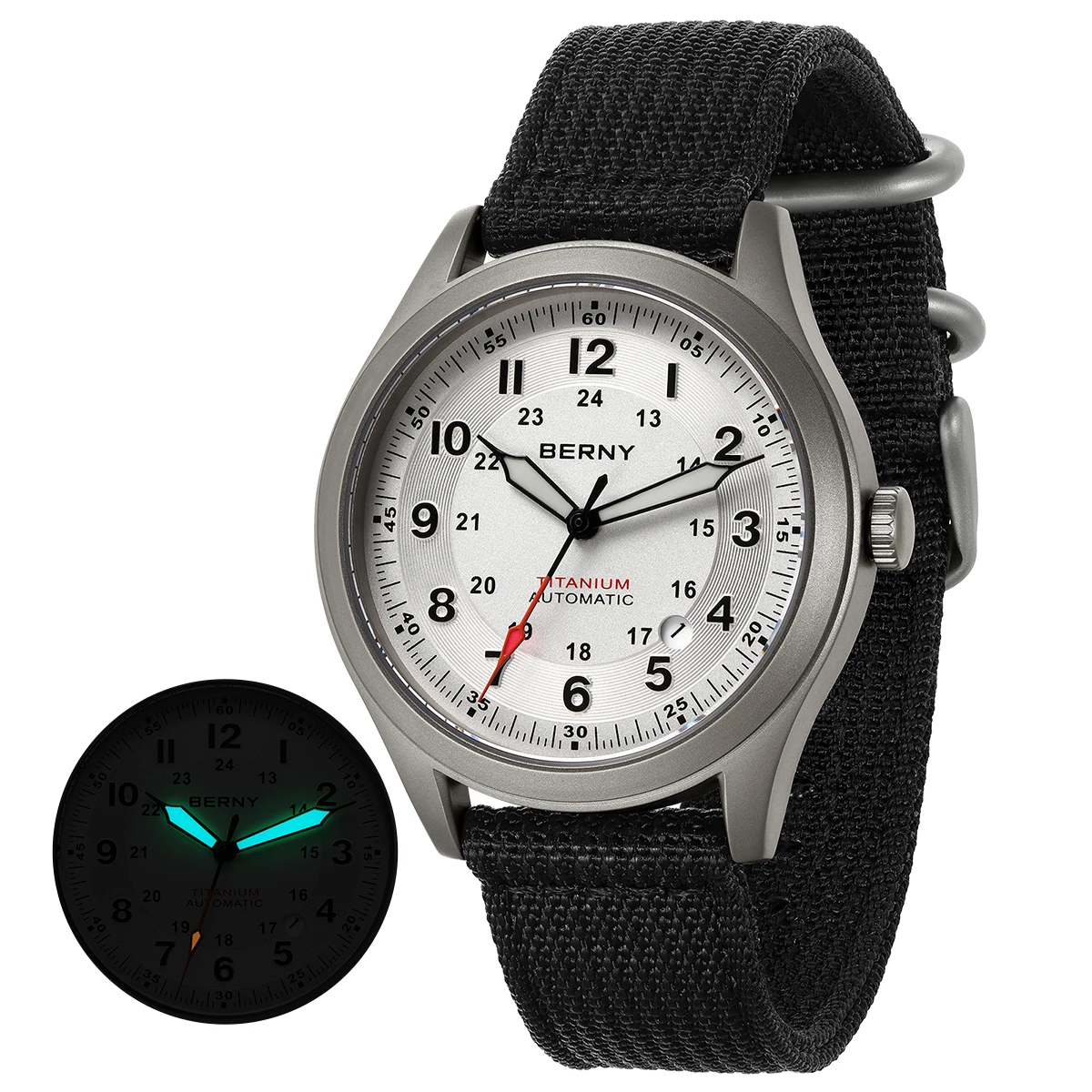
Cost Factors: Premium Protection and Investment Value
The durability differences between these materials directly impact both initial purchase price and long-term value proposition. Generally, titanium watches command a 15-30% price premium over their stainless steel counterparts, reflecting several manufacturing challenges:
- Titanium is more difficult and time-consuming to machine
- Special tools and expertise are required for cutting and finishing
- The material itself costs more than stainless steel
- More complex production processes increase manufacturing time
However, this price difference must be weighed against titanium’s specific benefits. For those who prioritize lightweight comfort, superior corrosion resistance, or hypoallergenic properties, the premium represents a worthwhile investment in characteristics that directly enhance the ownership experience.
From an investment perspective, both materials retain value well when properly maintained. Premium watches in either material can last for generations when properly cared for, making them true lifetime investments. The how long automatic watches last explores how material choices influence the longevity of fine timepieces beyond the case material alone.
Maintenance and Care: Keeping Each Material at Its Best
To maximize durability, each material requires specific care approaches:
Titanium Care Recommendations:
– Clean regularly with mild soap and water
– Avoid abrasive polishing cloths that might scratch the surface
– Use ultrasonic cleaners cautiously as they may affect specialized coatings
– Accept that scratches will occur but will be less visible than on steel
– Consider professional refinishing for serious scratches (requires specialized equipment)
Stainless Steel Care Recommendations:
– Clean regularly to remove salt and chemicals
– Use dedicated polishing cloths to maintain shine
– Light scratches can often be buffed out with appropriate polishing compounds
– Avoid prolonged exposure to saltwater without rinsing
– Professional polishing can restore like-new appearance periodically
Both materials benefit from regular cleaning to remove skin oils and environmental contaminants. For tool watches meant for rugged use, our rugged automatic watches feature designs specifically engineered for minimal maintenance while maximizing durability.
Military Inspired Automatic Watches, Rugged Automatic Watches, Tactical Automatic Watches
Price range: $852.14 through $994.60 Select options This product has multiple variants. The options may be chosen on the product pageAutomatic Chronograph Watches, Classic Style Dive Watches
$3,053.06 Select options This product has multiple variants. The options may be chosen on the product pageBronze Automatic Watches, Military Inspired Automatic Watches, Professional Spec Dive Watches
Price range: $1,442.21 through $1,442.82 Select options This product has multiple variants. The options may be chosen on the product pageProfessional Spec Dive Watches, Titanium Automatic Watches
$574.74 Select options This product has multiple variants. The options may be chosen on the product pageClassic Automatic Dress Watches, GMT Automatic Watches, GMT Dive Watches
Price range: $468.93 through $552.94 Select options This product has multiple variants. The options may be chosen on the product pageClassic Pilot Watches, Military Inspired Automatic Watches
$561.00 Select options This product has multiple variants. The options may be chosen on the product page
Real-World Performance: How These Materials Age Over Time
Beyond theoretical specifications, the way these materials age with daily wear reveals important differences in long-term durability.
Titanium develops a subtle, distinguished patina over years of wear. The matte gray surface tends to maintain its overall appearance, with scratches blending into the overall finish rather than standing out prominently. Even decades-old titanium watches often retain their distinctive aesthetic without looking worn out.
Stainless steel ages differently depending on its finish:
– Polished surfaces show scratches more prominently but can be restored
– Brushed finishes hide minor scratches better but show wear patterns over time
– Mixed finish watches develop a character that many collectors appreciate
Many watch enthusiasts note that stainless steel watches develop what’s called “wabi-sabi”—a Japanese concept embracing the beauty of imperfection and natural aging. This patina tells the story of the watch’s journey with its owner, something many collectors value highly.
The evolution of dive watch technology provides historical context for how these materials have performed over decades of real-world use, demonstrating that both can stand the test of time when properly designed and maintained.
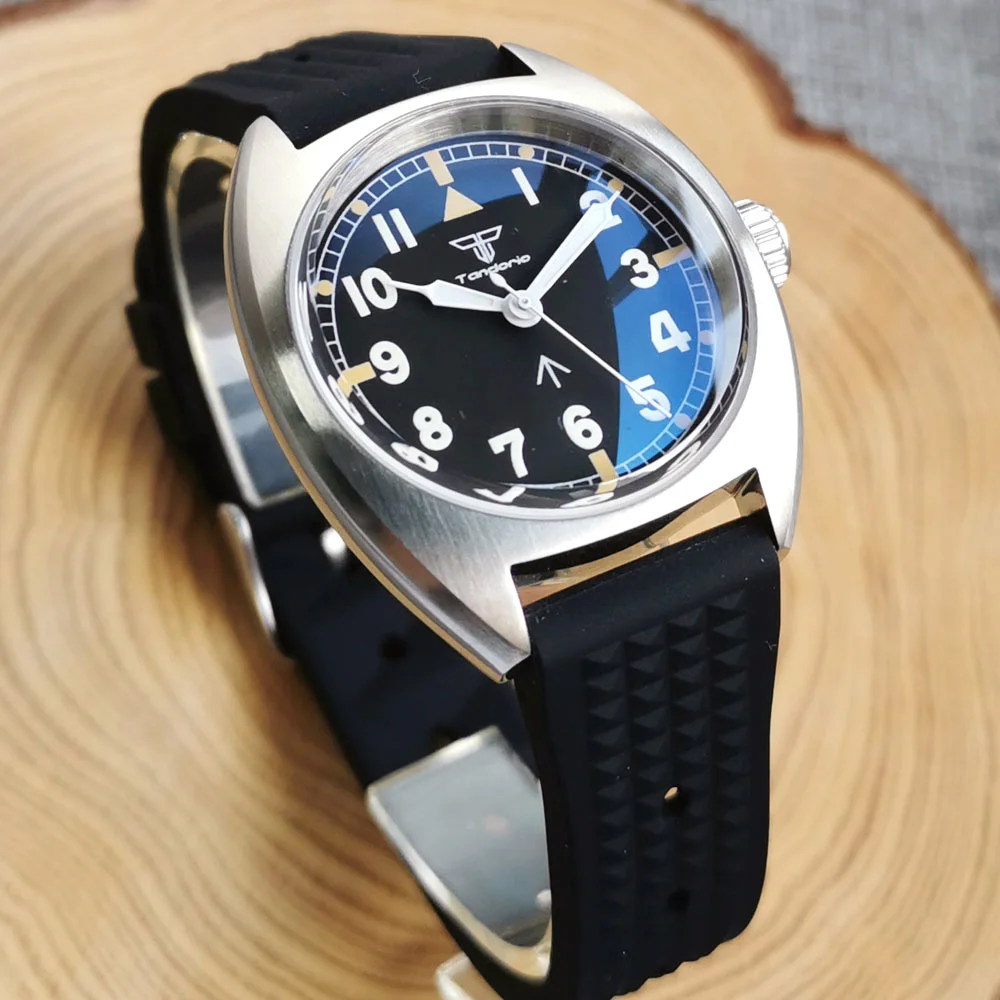
Which Material Is Best For Your Specific Watch Needs?
Selecting between titanium and stainless steel ultimately depends on your unique priorities and wearing habits:
Choose titanium if you value:
– Maximum comfort and minimal weight
– Superior corrosion resistance for marine environments
– Hypoallergenic properties for sensitive skin
– Modern aesthetic with subtle gray appearance
– Maximum resistance to environmental factors
Choose stainless steel if you value:
– Classic, versatile appearance with various finishing options
– Better scratch resistance for office environments
– Traditional substantial feel and heft
– Easier maintenance and polishing options
– Slightly lower price point for comparable models
For active lifestyles involving frequent swimming, hiking, or outdoor activities, titanium offers practical advantages that justify its premium. For office environments or formal settings, stainless steel’s refined appearance and scratch resistance may prove more beneficial.
Our automatic field and military watches collection offers options in both materials, allowing you to select based on your specific wearing scenarios and preferences.
FAQ: Common Questions About Titanium and Stainless Steel Watch Cases
Can titanium watches be polished to remove scratches?
While titanium can be refinished, it requires specialized equipment and techniques not commonly available. Home polishing is not recommended as it can damage the surface. Professional watchmakers with titanium experience should handle any refinishing needs.
Will stainless steel watches rust with regular swimming?
Quality stainless steel watches with proper water resistance should not rust with regular swimming in pools or oceans. However, always rinse with fresh water after exposure to saltwater or chlorine, and ensure the crown is fully secured during water activities.
How much should titanium’s weight savings matter in watch selection?
Weight preference is highly subjective. For all-day comfort, especially with larger watches over 42mm, titanium’s reduced weight can significantly improve wearability. However, some collectors prefer the substantial feel of steel as it conveys a sense of quality and presence.
Are coated cases more durable than uncoated ones?
Modern coatings like DLC (Diamond-Like Carbon) can dramatically improve scratch resistance, sometimes by a factor of 5-10 times. However, if the coating does eventually scratch, repair becomes more difficult as the entire component typically needs recoating to maintain a consistent appearance.
Does titanium’s lower weight mean it’s less durable?
No, titanium’s lower weight results from its lower density, not from any compromise in strength. In fact, titanium offers superior tensile strength and better corrosion resistance than stainless steel, making it more durable in many respects despite its lighter weight.
For those specifically interested in water sports and diving activities, our automatic dive watches collection offers excellent examples of both materials engineered for underwater durability.

